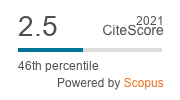SYNERGETIC EFFECT COMBINING UML AND PETRI NETS IN DESIGNING MODERN INFORMATION SYSTEMS
Abstract
This paper reviews the most archetypal features of UML and Petri nets. Formed modeling structural scheme reflects the trends of designing modern information systems. This paper also overviews the possibility of converting UML net into Petri net. At the end, the paper gives a conclusion, and also a prospective of further research – using methods presented here. Development of organizational information systems (IS) recently becomes an important subject. Lately, the Unified Modeling Language (UML) became the standard in creating software, and in designing relatively simple organizational information systems. Some UML diagrams are also used for organizational sectional modeling, reengineering of business processes, and process analysis. By current view UML is used for specification of task sequences, and in the process of creating software for generation of program code class diagrams are being used. Class diagrams are sourced using activity diagrams, which are based on empirical reasoning and are not described by mathematical methods. UML methodology only allows very limited modeling of simple systems, to say nothing of the possibilities to evaluate process dynamics. That’s why Petri nets are often tried to use for designing of systems. High development of IS is determined by formal mathematical methods. Petri nets are formalism for performing process characterized by parallel links analysis. Petri nets characterize parallel structures, flexible modeling, and highly developed mathematical formalism. However, the results show that it is still failed to implement universal modeling of dynamic processes. Using methodology of Petri nets and its extensions (ex. Object Petri nets) is not absolutely rational because additional efforts are needed for evidence of objective features, besides by modeling systems using objective methodologies, particularly UML, cumulative experience is being lost. It limits system development possibilities, especially in a case of advanced systems, where deeper analysis of activity alternatives is necessary, demanding to evaluate dependences on variable business conditions under the influence of external factors, also continuous modernized data mining systems influencing system’s flexibility and quality requirements, and that is the basis of dynamic IS creation. Therefore this paper proposes comprehensive information system creation model, which combines internals of both, net and object designing methodologies. This model also applies to simplified cases when information system (IS) development stages may be executed by using only UML features, while in a general system creation case hybrid modeling scheme is recommended. For that purpose methods of transformation from UML to Petri net and modeling possibilities’ expansion ways, which allow better implementation of work sequence management, are being improved in the process. The conclusion state that implemented IS using suggested modeling scheme characterizes flexibility, and enables appending new features to the system without blocking its exploitation. Concerning work, particularly mark management methods enable aiming that implementing IS would have modeling structure, possibilities to change system’s functions and features by supplementing system with separate program modules without changing whole system.
Downloads
Published
Issue
Section
License
Copyright terms are indicated in the Republic of Lithuania Law on Copyright and Related Rights, Articles 4-37.





